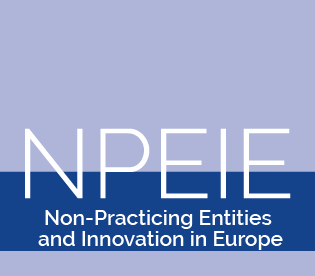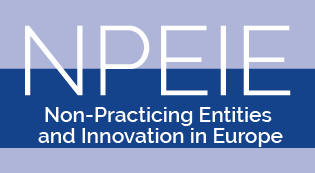The Non-Practicing Entities and Innovation in Europe (NPEIE) is a project funded by the French National Research Agency (ANR). Its principal objective is to constitute the first systematic and extensive research programme aiming at punctually qualifying and quantifying the phenomenon of Non-Practicing Entities (NPEs) entering and affecting the market for technologies and innovation. A particular attention is devoted to the European context, a region where the patent monetization business is becoming increasingly popular.
The Context
During the last two decades, increased opportunities for patent monetization have resulted in the rise of institutions facilitating the sale of patents (Hagiu and Yoffie, 2013). New intermediaries, such as patent aggregators and, more generally, patent assertion entities (PAEs) have become quite influential and controversial in the industries they touch, sparking heated debates, especially in the US, about the economic role they play in the patent market and their effects on innovation dynamics. These entities are accused to seek licensing revenues through litigation or threat of litigation – sometimes imposing costs that are not proportionate to the value of the patented technology -, while at the same time not producing any invention nor output. Similarly, universities are progressively more active in the monetization activities: although they have been engaged in technology transfer for decades, new evidence seems to indicate that universities have recently become more aggressive in trying to monetize their patents through enforcement actions.
Conventional wisdom holds that patent monetization is pursued less often in Europe, due to some combination of higher cost of enforcement and smaller damages awards. However, some recent evidence have shown that PAEs are hardly a uniquely American phenomenon (Fusco, 2014; Orsatti and Sterzi 2018). Indeed, recent figures demonstrate that their presence in European courts is not negligible. A recent study of Darts-IP (2018) shows that during the period 2007-2016 litigations involving NPEs in Europe has grown about 19% per year. Similarly, since the 2000s, European universities are more and more active in the exploitation of their inventions (Martinez and Sterzi, 2020).
What we do
Our research focuses on the characteristics and the consequences of IP exploitation strategies of PAEs and university TTOs.
As regards as PAEs, we wish answer the following questions:
To which extent PAEs are active players on the market for technology, as both buyers and sellers? Are PAEs increasingly present in Europe? When PAEs buy, who they buy from, and which kind of technologies do they target? What are the impacts of PAEs on innovation dynamics and technology transfer? If negative, which are the possible solutions to remedy these inefficiencies?
As regards as university TTOs, we address the following questions:
To what extent universities are active players on the market for technology? How often do universities litigate in courts? Which are their main strategies in IP monetization? Which the impact on downstream innovation?
This project relies on the expertise of its members, who are experts on the issue of patenting and technology transfer. They are spread over five sites, but many of them have already collaborated in the past. New collaborations will also be undertaken, by matching, in this project, expertise on IP law, professional practices, applied micro-econometrics, and different data collection methods. The project should significantly also contribute to building a strong European research base on NPEs, in connection with policy makers and practitioners. Implications and policy conclusions that we aim to provide will be thus relevant for innovation purposes, development and growth, even more in the very actual phase of restructuration and redefinition of the entire European patent legal-system, with the creation of a new supra-national entity (the Unified Patent Court).




